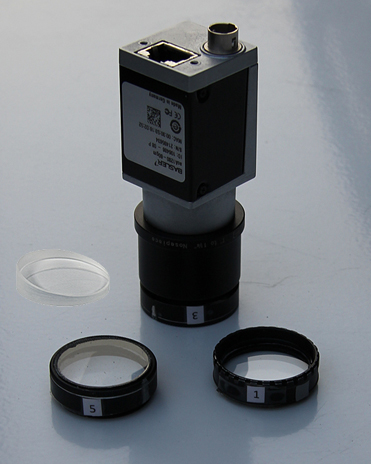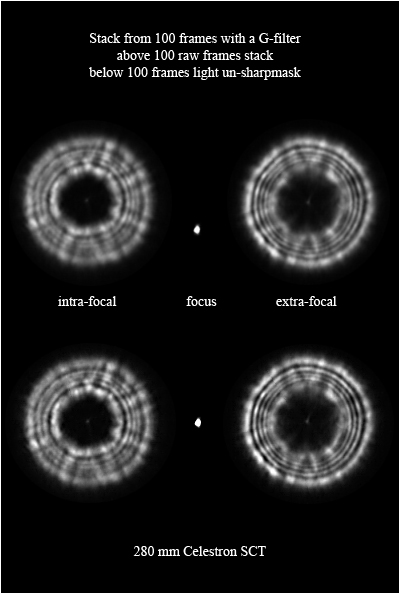
![]()
![]()
![]()


Magazine Zenit: In conversation with R.Bosman
You might not expect it, just below the center of Enschede is the beautiful 35 cm telescope from Richard Bosman (Enschede, 1964) on top of his house in a kind of dormer window with a retractable roof. In this small observatory (3 at 3 meters) is just room for a small desk with screen and a keyboard.
Read more here in PDF format.High-resolution optimization. Imaging the Moon.
The pleasure of perceiving objects beyond our atmosphere speaks to the Imagination that we may not be alone in the universe. Humanity has been exploring Earth and the Universe for centuries; we are explorers and adventurers on a small planet. In order not to have to go far from home, we can already see our satellite beautifully with a small telescope. What could be more beautiful than to image the Moon in all its glory and sharpness? We can largely determine ourselves how nice and sharp the image looks through an eyepiece, and of course this also applies to a (digital) camera. Read more Astrobulletin 59 2018 PDF formatSolution Newton rings Sun imaging.
I had already said one time that I have suffered from the Newton's rings with the Basler ace camera.
I have visited many sites where I might find a possible solution and the tilt adapter seems to me the best.More than 10 years ago, Rik ter Horst made me different dispersion wedge.
1 degree to 5 degrees. Especially for Mars and then worked very well. The fine dispersion are simple, they fit into a filter mount and screw this up for your camera. The forerunner of the ADC.
A few months ago I had already reported that the solution to Newton's rings might be able to give the ADC or a solution or fine dispersion for me.Today done in poor conditions than a test with and without dispersion wedge.
In these two recordings is not about the resolution, but the difference with and without dispersion wedge.
The result is amazing.
---------------------------------------------------------

Images are made with 110 ED, Daystar Prominence, 3 degrees dispersion wedge and Basler Ace 1300.
There is 1 minute difference between the two recordings.
More Solar images
High Resolution images can be easely done, no triks or somethings else do you need for Moon and Planets images in High Resolution.
The ACSP is the important factor the produce HR images.
ACSP Stand for Acclimation, Collimation, Seeing, Processing.
Acclimation: cooling down your telescope.
Collimation*: adjustment of the alignements of each optical element of a telescope.
Seeing: extern factor, refers to the blurring and twinkling of astronomical objects such as stars caused by turbulence in the Earth's atmosphere.
Processing*: is any form of information processing for which the input is an image, such as photographs or frames of video.
Example: collimation and seeing.Press for (6 mb) animation startest, seeing, collimation
Moon imaging: from raw to end result.
Lunar observation from 4-3-2020 (image reduces to 50%)
- raw stack 500 frames (from 5000)
- stack 500 fr. sharpened in Autostakkert 25% with 25% raw fr.
- PS unsharp mask in (150-1)
- PS 2 layers 50% soft light - filter highlights 25%



